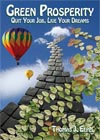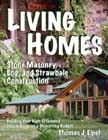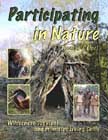-One-
Quest for the Real Reality
Poking Holes in the Illusion
"A belief system may be defined as open to the extent that new data can enter and affect existing beliefs. A person will be open to information insofar as possible, but will unconsciously reject it, screen it out, or alter it insofar as is necessary to ward off threat and anxiety. The closed mind can distort the world and narrow it down to whatever extent is needed to serve these protective goals and still preserve the illusion of understanding it."
-William Harmon, Global Mind Change
Oxana was raised by dogs since she was three years old. Her home was crowded with older siblings, so Oxana crawled into the doghouse and lived there. Her alcoholic, neglectful parents eventually disappeared, so Oxana lived with stray dogs. She ate raw meat and carrion and learned to walk on all fours and bark like a dog. She lapped at her food, bit at fleas, and scratched behind her ear with her foot. She had acute senses for hearing, sight, and smell. Authorities in Ukraine discovered Oxana in 1991 when she was eight years old. With intensive speech therapy she was able to acquire basic language skills. However, at age twenty-two she remained developmentally a six year-old. When she showed her boyfriend her ability to run on all fours and bark like a dog, he "bolted like a terrified postman." In times of stress she still reverts to dog-like behaviors.
Oxana is not so different from the rest of us. She mimicked what she was exposed to as a child and that defined her reality. We also mimicked what we were exposed to, and that defines our reality. Her reality was normal to her. Our reality seems normal to us. She didn't question her reality. We rarely question ours. Yet, our behaviors might seem as bizarre to an outside observer as Oxana's behavior seems to us.
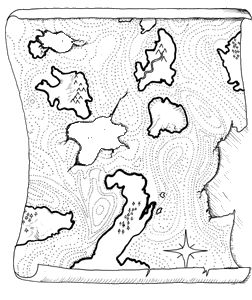 Whether we are five years old or fifty, each of us has a mental model of how the world works. It is our map of reality. We accumulate new information and perspectives as we mature, updating our model as we go along until the reality we know at fifty is radically different than the one we understood at five. The funny thing is that we live every day in between as if our map of reality is complete. No matter how old we are, we assume that today's version of reality is the correct one. We update our map only when new evidence forces us to make corrections. It is exceedingly rare that we assume the map is incomplete or flawed and ask what we might be missing.
Whether we are five years old or fifty, each of us has a mental model of how the world works. It is our map of reality. We accumulate new information and perspectives as we mature, updating our model as we go along until the reality we know at fifty is radically different than the one we understood at five. The funny thing is that we live every day in between as if our map of reality is complete. No matter how old we are, we assume that today's version of reality is the correct one. We update our map only when new evidence forces us to make corrections. It is exceedingly rare that we assume the map is incomplete or flawed and ask what we might be missing.
We are blind to our blindness. We assume we know what counts because we are oblivious to what we don't know. We go through our lives believing we can see, while remaining blind to that which we have not seen. We assume our beliefs, values, and decisions are correct. We charge ahead on the assumption that we are right until evidence to the contrary smacks us in the face. And yet, what would happen if we questioned everything? What would happen if we questioned our likes and our dislikes, our beliefs, our values, and our motivations in everything that we do? Instead of assuming that we are right, what would happen if we assumed that we are wrong? In this book we will test our most basic assumptions about reality to separate ourselves from that which we mimicked growing up. We will detach from preconceived notions in the hope of discovering what reality really is.
The results of this quest may be unsettling. Along the way we will find compelling evidence to suggest that 1) we do not qualify as a self-aware species, 2) our perception of free will is largely an illusion, 3) our sense of self and mind are not hardwired but emerge from language, 4) our definition of reality, or worldview, changes in predictable ways as we mature, 5) entire cultures evolve through similar stages, 6) these worldviews are dictated by technology, and 7) these worldviews determine our morals and values, how we perceive cause and effect, how we solve problems, how we raise and educate our children, and how we govern ourselves.
This book is the quest to become less blind. It is a quest to see what has been staring us in the face all along. It is a quest to define reality, a journey that will take us to the ends of the universe and back in reflections of self-discovery. It is only by stepping beyond these worldviews that we can discover the true nature of reality. It is only as outside observers that we can see a clear path forward to build an abundant and sustainable society, achieve world peace, and find contentment in our lives.
Beliefs about Reality
Stepping out on the front porch one bright, warm morning, we see a familiar scene of houses, cars, lawns, trees, pets, and people. Like the neighbors, we are preparing for the daily commute, or perhaps getting ready to send the kids off to school. As we pick up the paper to see what is happening in the world, we note the next door neighbor doing the same thing. It is a familiar routine. This is reality as we know it.
Some days we enjoy visiting with the neighbors. We talk about the weather, the latest headlines, sports, politics, the opposite sex, or any number of possible subjects. We may differ in opinions on certain issues, such as which is the better football or baseball team, but we can talk about the strengths and weaknesses of each. We could have similar conversations with almost anyone else we see on the street because we share a common reality. Aside from cultural variations, this reality seems to stretch from coast to coast, around the world, and encompasses the entire universe. Because we share a common reality, we can predict what would happen if we tossed a ceramic coffee cup onto the concrete sidewalk. And because reality is consistent, we would expect the same results anywhere else in the world. Thus, we seem to agree on the fundamental parameters, and our opinions differ only over the minor details, such as which is the better political party. Right?
Maybe not. Among people we visit with every day, viewpoints about reality may vary widely. Obvious differences revolve around our views of creation or evolution. Looking out the window, we may see a world that was created in six days by a God who lives in heaven above, or we may see a world that was a big accident: first there was nothing, and then "BANG"-the universe materialized itself into stars, planets, dinosaurs, apes, people, soap operas and cell phones. These are substantial discrepancies in beliefs about the nature of reality. We may be surprised at the diversity of viewpoints among people we interact with daily.
Including nonreligious people as a group, there are more than twenty broadly defined religions with their own beliefs about reality, each with a following of at least half a million people. Each group claims to represent the correct version of reality. Several thousand smaller religions have also been documented. Variations within many of these broadly defined groups, including Christianity, are so great that some factions don't recognize the others as sharing a common religion at all. For example, Mormons consider themselves Christians, but many Christians of other denominations would argue otherwise. Frequently, people are willing to kill each other to prove that their version of reality is the right one, such as in the Sunni versus Shia schism over Islam. Ultimately, it must lead us to wonder: How we can determine which reality is really real? If we declare that our reality is the one and only correct version, then how can we be certain of it?
Most of us assume that the correct version of reality is the set of beliefs we were most exposed to as children, typically influenced by our parents. After all, we trusted them since childhood, and they always seemed to know everything about the universe-things like how to make macaroni and cheese, how to tie shoes, and how to cross the street without being hit by a car. We absorbed similar beliefs through exposure, the same way we learned language. However, if we think about it in purely statistical terms, with all the different belief systems in circulation, there is a very low probability of being born into a family that has figured out which one is the real reality. Perhaps the only reason any of us question reality now is due to the realization that so many of our fellow human beings grew up with a different version than we did.
A Mind Game
The quest to determine the real reality may be the ultimate mind game. Imagine a virtual reality scenario in which we put on a headset to go into a simulation. Our mission is to find our way back to the real reality. However, as part of the game, we enter this virtual world as newborn children. We lose all prior memories. We lose all prior knowledge, language, and personal identity. We don't even remember that we have a mission, or that we are playing a virtual reality game. To accomplish this mission we are no longer aware of, we are born to some virtual parents who will take care of us until we can stand on our own.
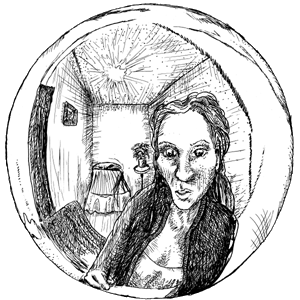 How do we proceed to achieve such a mission? Is it achievable at all? How can we be certain that we are not already in a simulation, playing this game already? To discover the real reality, we have to probe around and poke holes in the illusion that now seems so real, until we can find a doorway beyond it. When we have successfully broken through one reality, we might reasonably assume that we are closer to the truth, but we should not assume that we have actually found it yet. We must poke around in whatever new reality we find ourselves in, searching for inconsistencies until we can break through that one as well. We must break through reality after reality to see what remains. Only then, when we have nothing left to poke and prod, can we assume that we have either discovered the real reality, or at least discovered a less distorted version of it.
How do we proceed to achieve such a mission? Is it achievable at all? How can we be certain that we are not already in a simulation, playing this game already? To discover the real reality, we have to probe around and poke holes in the illusion that now seems so real, until we can find a doorway beyond it. When we have successfully broken through one reality, we might reasonably assume that we are closer to the truth, but we should not assume that we have actually found it yet. We must poke around in whatever new reality we find ourselves in, searching for inconsistencies until we can break through that one as well. We must break through reality after reality to see what remains. Only then, when we have nothing left to poke and prod, can we assume that we have either discovered the real reality, or at least discovered a less distorted version of it.
As we begin this game, we can be thankful in America that we have been born into a melting pot of diverse cultures. After all, if we were born into a culture that was largely isolated from all the others, then we would grow up with only the local version of reality, never having the opportunity to meet and mingle with people who perceive reality differently. For example, an inner city child might perceive a raven as a noisy, garbage-eating bird, while a rural Native American child might perceive a raven as a spiritual messenger with something to say. If circumstances bring these two children together to play, and they see a raven, then each child will notice the other's reaction to the bird. It is only by realizing that other people have a different version of reality that we are able to begin questioning and poking holes in our own.
The Tool Shed
The first step in our quest is to take stock of the available tools to probe and poke at our reality in search of answers. Let's start with our basic senses: Can we accurately define reality through direct examination with our eyes, ears, nose, taste, and touch?
As we continue standing on the front porch in our imaginations, we look around at the sky above and the grass in the yard and the cars going by in the street. It is easy to assume that we are seeing reality as it really is. However, keep in mind that what we see is limited to the visible spectrum of light. The "visible spectrum" is not a property of light itself but rather a property of our eyes and what our eyes are adapted to seeing. Thus, if we could see the world through the eyes of certain insects or animals, then the "visible spectrum" might include infrared light, which makes the world look dramatically different. If we look at a person in infrared we would see a bright spot where the head and heart are, since those parts of the body are warmer and radiate more heat. It would be darker in the coolest parts of the body, such as the fingers and toes, which tend to have a cooler body temperature. The world appears greatly different in infrared, and it is important to acknowledge that this version of reality is equally as valid as the reality we experience.
Also consider the human nose. Our noses are pathetic sensory organs compared to dog noses, which are a hundred times more sensitive. A dog going across the yard with its nose to the ground can read the soil the way we might read a book, gathering volumes of information about who has been there and what they did in the yard. This sensory experience is dramatically different from ours and almost completely inaccessible to us as we stand on the front doorstep sniffing the air. This quick evaluation of two of our basic senses demonstrates that we cannot trust our senses alone to give us an objective perception of the reality we experience. When we acknowledge the limitations of our basic senses, then we have to acknowledge that, at best, we have a skewed perception of reality.
As noted by Jim Baggott, author of A Beginner's Guide to Reality, there is no evolutionary reason why we should be wired to perceive reality as it is: "Just because I cannot understand what reality might be like for a bat does not mean that the bat's perceptions and experiences of that reality are any less legitimate than mine. What this implies is that evolutionary pressures lead to the selection of sensory apparatus that delivers a finely tuned representation of reality. What kind of representation depends on what kind of ecological niche a living creature is competing in. All that matters is that this is a representation that creates survival advantages. There is no evolutionary pressure to select a mind to represent reality as it really is."
While we cannot know what reality is like to a bat, we can at least understand that a bat navigates through reality with sonar. Similarly, with infrared imaging we can simulate how reality might be perceived by a snake. While we cannot hope to fully know what reality is like to other species, at least we can extrapolate from our accumulated knowledge to imagine the possibilities.
While recognizing that each creature experiences reality in a dramatically different way, we can reasonably argue that it is the same reality, just a different perception of it. In other words, our perceptions may be limited by our senses, or lack of them, but we can still probe the fabric of reality with the senses we have. The results will be perceived differently by our senses than by the senses of a dog or a bat, but it is apparently the same reality. It is sufficient for our quest to merely acknowledge that these different perceptions exist. If need be, we can conceptually build crude models of reality from these different perspectives, if only to remind ourselves that our senses don't give us the whole story.
Complicating matters is the issue of virtual reality. We acknowledged the limitations of our senses, but can we trust that anything we experience is actually real? For example, most humans enjoy the feeling of physical intimacy. But it isn't touching or being touched that we experience as pleasurable; it is the electrical impulses running through the nerves to the brain that signals the brain to decide it is experiencing pleasure. Likewise, we never actually see the world we live in, because our brains process electrical impulses, not light waves. Photons that strike the nerve cells in our retinas are converted to electrical impulses and passed along to the brain for processing. The world we see is created inside our brains.
If you and I exist as mere brains in a laboratory, or if we are hooked up to a virtual reality machine, then our entire experience of reality could be generated by the careful manipulation of electrical signals. For example, stimulation to specific areas of the brain can induce wild emotional swings in patients, from laughter to sobbing. Patients have no idea where the emotions come from. When one woman was asked what she was laughing about she replied, "You guys are just so funny... just standing around." While it seems improbable that we are experiencing some kind of artificial reality, it is challenging to prove that we are not. We might exist as brains in a laboratory or software in some kind of reality simulation. We will attempt to tackle these issues before the end of our quest.
Parameters
Besides being limited in our sensory organs, another obstacle to defining reality is that our perceptions are distorted by our survival needs. For example, in the human experience of reality, the deadly amanita mushroom is toxic and aptly named. However, from the perspective of squirrels, it might be more correctly called the "delicious amanita," which they eat and thrive upon. In a truly objective sense, an amanita is neither good nor bad, but from a human-centric perspective, it is definitely bad to eat. Similarly, we could not at this point declare that either murder or war are "bad" since that would be a judgment based on assumptions about reality. Nevertheless, I have no desire to eat a deadly amanita, nor to be stabbed or bombed. Dying might be a viable shortcut to get outside of this reality, but we may not find the answers we seek. We might also lose the chance to try again. There may be a better path to determining the real reality, and we can always resort to dying some other time, so let's start with a more inspired strategy and reserve death as a future possibility.
Thus, our quest is not objective in an absolute sense. It is undeniably biased towards the assumption that there is value in living, if only to have more time to ponder what that value might be. This bias is evident especially in regards to tackling the issues that threaten the future of humanity. If we are to survive as a species, then we must find a way to live harmoniously and sustainably with each other and the planet. Implicit in that statement is the judgment that our species is worth saving, at least for now.
We began this quest by acknowledging that our senses and survival needs provide us with a perception of reality that is both limited and distorted, and could be entirely illusory anyway. By this initial assessment of our situation, the task of determining the real reality would seem to be utterly hopeless. But let's consider the resources we do have at our disposal: We have the ability to compare different theories of reality, and to the extent that we can detach from our own cultural biases, we can reason through the differences between them in search of supporting or refuting evidence. We may not be able to prove any particular version of reality correct, but we might at least be able to dismiss some versions based on inconsistencies within them, which is equally helpful. By process of elimination, we can see what's left.
To ensure an objective playing field in this quest to define reality, I propose the following methodology: 1) we distinguish cultural realities from universal reality, 2) we assume that everything is true-at least within the proper context, 3) we proceed with unbounded open-mindedness tempered by equally unhindered skepticism, and 4) we look for consistency to test the probability or improbability of any particular version of reality.
Cultural Reality versus Universal Reality
Different cultures and religions often have very different viewpoints about what is right and wrong or how the universe works. In terms of food, for example, we may be horrified at the thought of eating a cat or a dog, but other people in the world are equally repulsed at the idea of eating beef or pork. Some cultures eat horses, rats, and insects, while others don't. Some ethnic groups avoid foods for legitimate physiological reasons, such as lactose intolerance. And in starvation situations, people have eaten almost anything, including other people. The point here is that food preferences often have little physical or nutritional basis; they are cultural biases-true within the context of the culture, but not universally true. Whether or not we personally decide to partake of new foods like cats or dogs or sushi, the quest to define reality requires that we recognize cultural realities for what they are-localized truths. Once we realize that, then we can seek out the greater universal truths. By detaching from our own conditioned sentiments about how things should and should not be, we can be open to discovering the universe as it really is.
Everything Is True within the Proper Context
In the quest to determine the nature of reality, all events and statements must be true-at least within the proper context, simply because they are generated by this reality and thus reflect something about it. In other words, no statements, anecdotes, or mysterious events can be dismissed as absolute fiction, because at some level there is truth about the nature of the reality that generated them.
For example, Renee and I adopted three of our four children. After living as a family for a couple years, my oldest daughter, Felicia, expressed how much she liked living in our sturdy stone and log house. She described how her birth family once lived in a house on the beach that was battered by a big storm, and they didn't know if the house would hold up through it. I listened to her story, knowing she never lived in a house on the beach and had never been in an awful storm. However, I also knew she wasn't lying. The symbolic nature of the story was obvious. She described in metaphor the stormy situation in her birth family and how much she liked being in a stable family. Lacking the tools to express herself directly, she was nevertheless able to communicate what she felt. Understanding the truth is just a matter of determining the proper context.
Similarly, we must acknowledge that all religions are true, at least within the proper context, since every religion generated by reality ultimately says something about the nature of reality. Interpretation of the truth of each religion may be debatable, yet the mere existence of each religion is itself a contribution to the reality we live in. The same could be said for alien abductions, out-of-body experiences, miraculous healings, fairy tales, and highly improbable good or bad luck. Whether real or imagined, the discussion of such phenomena is inherently part of our reality.
Open Minded and Skeptical
If we are to discover the true nature of reality, we must be open to even the most outrageous possibilities and yet be skeptical of everything, especially our own assumptions and convictions. Consider how outrageous it must have seemed when it was proposed that the earth was round instead of flat. We know the earth is round because we are told that since childhood. We have pictures of earth from space for proof. Pythagoras proposed that the earth was round in the sixth century B.C., an idea that was tested and debated by scholars for hundreds of years until it gradually became common knowledge. Yet today there are still people in tribal cultures who know the world is flat. How preposterous to think that the earth is round like a ball with land and water and people all the way around! It doesn't make any rational sense. How could people be walking around upside down on the other side of the planet without falling off?
The idea that the earth moves around the sun was equally preposterous, since anyone could see that the sun rose in the east and moved westward across the sky each day. But by observing the phases of Venus (like our phases of the moon), Galileo found evidence to support a theory articulated by Copernicus that the earth orbits the sun. His published works contradicted Church dogma that the earth was the center of the universe. Galileo was tried for heresy in 1633 and placed under house arrest for the last nine years of his life. Confinement had little or no effect on the nature of reality. The earth continued to revolve around the sun, regardless of the position of the Church, as it has for billions of years.
Scientists can be equally blind. While scientists could be perceived as open minded, curious explorers of natural phenomena, it is nearly impossible for scientists to discover anything that doesn't fit established preconceptions about the nature of reality. For instance, a scientific committee was appointed by the French Academy in 1772 to investigate meteorites. The scientists concluded that hot stones could not fall from the sky on the basis that there were no such stones in the Newtonian model of the solar system. The committee dismissed the idea of rocks from space and "explained" the phenomena in terms that fit existing models: the rocks must have been heated by lightning, or they were sent aloft by volcanic eruptions or whirlwinds, or the observers who witnessed them fall from space were delusional. The committee was so prestigious and their arguments so convincing that museums across Western Europe discarded their meteorite specimens.
If we hope to discover the true nature of reality, then we must be open to the possibility that reality isn't what we expected it to be. We must be prepared to openly investigate ideas as outrageous as the notion that the earth is round and orbits the sun. If, for example, we hear about animals talking to people, or of people hearing the voice of God, we should not dismiss these stories without being open to the possibility that these people experienced something. In other words we should neither believe nor disbelieve anything, but rather, we should suspend judgment and allow the available facts to speak for themselves.
Any phenomena lacking a satisfactory explanation should not be dismissed simply because it does not fit into present worldviews. In questioning the validity of such a phenomena we must be equally open to the possibility that, like the scientists who dismissed the notion of meteorites, our inability to explain it could be due to the limitations of how we presently define reality. Rather than either accepting or dismissing unfamiliar phenomena, we should instead suspend judgment and let it float along in an indeterminate state, in the hope of finding an acceptable explanation later on. Even if claims of unusual events are proven false, we may learn something about reality through the process of investigation.
Being open minded to the most outlandish possibilities ensures that we won't dismiss something that might be important, while being equally skeptical ensures that we won't embrace a literal interpretation of an idea or belief that lacks substance upon investigation. However, the question remains: How can we determine whether or not we have found something true?
Consistency
It might be ideal to approach this quest for reality with the scientific method, to generate a hypothesis and to test it by controlling all the variables, arriving at consistent results whenever and wherever each experiment is performed. With a proper laboratory and an infinite amount of time to learn and tinker, I could conduct all previous scientific experiments to verify their authenticity and run additional tests of my own. However, even if I had such a lab at my disposal, then you as the reader would be stuck accepting my results on faith, unless you had a similar lab and an infinite amount of time to verify my work.
Thus, the reality of this quest for reality is that we are constrained by the tools at our disposal, which for most of us consists of little more than books and media, a keyboard and mouse, and personal experience. It is impossible to verify every fact, but we can look for consistency. For example, science might be unable to describe that which remains unknown, but it has established some consistent facts about reality to provide us with a suitable foundation to start from. Consider consistency within the scientific timeline of the universe compared to consistency within the literal biblical timeline.
Scientists have been able to measure the speed of light at 186,282.397 miles per second, and we know that it takes light eight minutes to traverse the ninety-three million miles from the sun to the earth. If the sun were suddenly yanked out of existence, we wouldn't notice it for another eight minutes. Similarly, when we look at stars in the sky, we are looking back in time. Our nearest neighboring star is Proxima Centauri, 4.22 light years away. A light year is the distance light travels in one year, or nearly 5.9 trillion miles. When we see Proxima Centauri, we are looking more than four years back in time. When we look at other stars, we look even farther back in time. If the universe is only six thousand years old, as suggested by the Bible, then we would see only six percent of our galaxy, which is about a hundred thousand light years across. New stars would seem to pop into existence every night as their light reached us for the very first time, but that's not what we see.
If the universe were only a few thousand years old, then we could not hope to see much of our own galaxy, let alone any other galaxies beyond it. Thus, we have reasonably established that the earth isn't the center of either the universe or the solar system, and the beginning of creation occurred much longer than six thousand years ago. The Bible may be full of many great truths, but the history of the universe doesn't seem to be one of them.
While scientific facts are constantly the subject of debate and revision, the revisions lead towards greater resolution, like piecing together a photograph from individual pixels. Without the benefit of knowing what the final image looks like, scientists have painstakingly fitted pixels of information together to form a fuzzy image of the universe. Researchers debate every detail and agree or disagree, or change their conclusions based on new evidence, but the big picture doesn't change much anymore. It becomes clearer with each passing year. Each discovery brings greater resolution, as events and dates are clarified back through time. It is this consistency that we will use as a reasonable guide to steer us along in the quest for the real reality.
A Fish in the Ocean
With unbounded open-mindedness tempered by equally unbounded skepticism we can proceed to explore the universe. We will seek the proper context behind every truth in the hope of distinguishing universal reality from cultural realities. Like fish trying to define the ocean, we will attempt to build a model of the reality we live in. Using consistency as evidence, we can then determine if we are on the right track.
Our model of reality must be representational, in the sense that a map is representational of the land. On a map, the roads or topography may be exaggerated to see them more clearly, or the curvature of the earth may be distorted to fit on a flat page. It is impossible to eliminate all the distortions, but cartographers do the best they can to minimize them to provide functional maps. In our own quest, it may be similarly impossible to define reality precisely, but as in mapmaking, we will seek to minimize the distortions to provide a functional roadmap to reality.
We may not see in infrared like a snake, read the ground with our noses like a dog, or see in the dark by listening to our own high-pitched screams like a bat, but-conceptually at least-we can understand that these perceptions of reality are as legitimate as our own. The bigger problem is to sort through human perceptions of reality. Although we all share the same basic senses, we perceive many different versions of reality. Thus, the quest for reality immediately becomes a study of human thought and perception. In order to figure out what reality is, we must understand how different people can look at the same thing and come up with such vastly different conclusions about it. In the process, we will explore many different versions of reality and assemble a sort of roadmap to navigate through them.
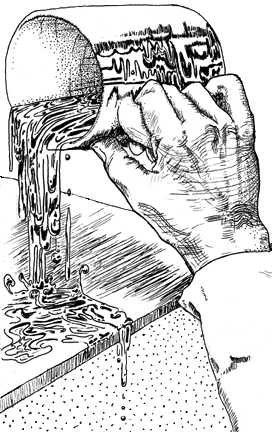 Roadmap to Reality
Roadmap to Reality
The reach of this book is necessarily as expansive as reality. The remainder of Part I is oriented towards "emptying one's cup" by testing familiar assumptions and deconstructing preconceived notions about reality. In short, we think we are a self-aware species and possess free will, but individually and collectively our behaviors suggest otherwise. We react to circumstances without consciously thinking, based on behaviors that were acquired subconsciously through mimicry and accumulated experience. As we will see, self-awareness-to the degree that it exists-is the result of our definition of reality, generated by the complexity of the culture we live in.
In Part II we explore relationships between common worldviews and the structure of the societies that generate them. These worldviews can be loosely defined and navigated like a map to retrace our history as a species, to understand our present experience of reality, and to explore the future.
In Part III we explore the frontiers of human potential, free from past assumptions, to see where reality might take us. Each level of reality can be thought of as a new layer that encompasses those that came before it. We can accept the good and shatter the illusions within each version of reality to move to the next layer. In the quest for the real reality, we will navigate through the layers, shattering illusions along the way, and see what is left over when we have stepped outside all other realities.
A fair warning is in order here. The journey ahead is not for the faint of heart. The quest for the real reality requires deconstructing one's existing beliefs about reality. If you are significantly attached to the illusion of reality you exist in now, then you may find the process jarringly uncomfortable at times. It is supposed to be. The path ahead requires questioning your most basic convictions. You may not like what you find. On the other hand, if you are ready to experience reality in ways you never imagined possible then you will find the adventure worth your time to explore. To begin this journey, we must start by questioning one of our most firmly entrenched assumptions: do we qualify as a self-aware or sentient species?
Return to the Table of Contents
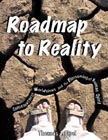
Order Roadmap To Reality Now!


 Whether we are five years old or fifty, each of us has a mental model of how the world works. It is our map of reality. We accumulate new information and perspectives as we mature, updating our model as we go along until the reality we know at fifty is radically different than the one we understood at five. The funny thing is that we live every day in between as if our map of reality is complete. No matter how old we are, we assume that today's version of reality is the correct one. We update our map only when new evidence forces us to make corrections. It is exceedingly rare that we assume the map is incomplete or flawed and ask what we might be missing.
Whether we are five years old or fifty, each of us has a mental model of how the world works. It is our map of reality. We accumulate new information and perspectives as we mature, updating our model as we go along until the reality we know at fifty is radically different than the one we understood at five. The funny thing is that we live every day in between as if our map of reality is complete. No matter how old we are, we assume that today's version of reality is the correct one. We update our map only when new evidence forces us to make corrections. It is exceedingly rare that we assume the map is incomplete or flawed and ask what we might be missing.  How do we proceed to achieve such a mission? Is it achievable at all? How can we be certain that we are not already in a simulation, playing this game already? To discover the real reality, we have to probe around and poke holes in the illusion that now seems so real, until we can find a doorway beyond it. When we have successfully broken through one reality, we might reasonably assume that we are closer to the truth, but we should not assume that we have actually found it yet. We must poke around in whatever new reality we find ourselves in, searching for inconsistencies until we can break through that one as well. We must break through reality after reality to see what remains. Only then, when we have nothing left to poke and prod, can we assume that we have either discovered the real reality, or at least discovered a less distorted version of it.
How do we proceed to achieve such a mission? Is it achievable at all? How can we be certain that we are not already in a simulation, playing this game already? To discover the real reality, we have to probe around and poke holes in the illusion that now seems so real, until we can find a doorway beyond it. When we have successfully broken through one reality, we might reasonably assume that we are closer to the truth, but we should not assume that we have actually found it yet. We must poke around in whatever new reality we find ourselves in, searching for inconsistencies until we can break through that one as well. We must break through reality after reality to see what remains. Only then, when we have nothing left to poke and prod, can we assume that we have either discovered the real reality, or at least discovered a less distorted version of it.  Roadmap to Reality
Roadmap to Reality